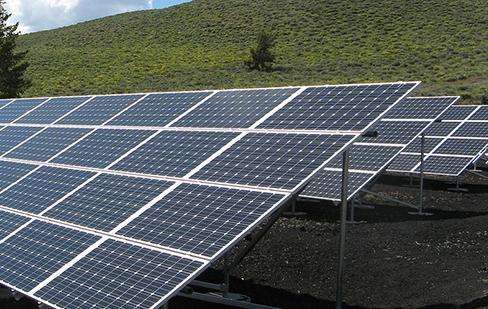Water-in-water sand is a combined product of water-in-water paint and real stone paint. It is mainly used to imitate litchi surface granite stone products.
The sand filled with water has the texture of natural stone on the surface of lychee and the effect of imitating granite. Although the surface is uneven, because the emulsion completely envelops the colored sand and the colored sand effectively forms a hydrophobic and oleophobic film, the wall is not easily stained.
Fluorosilicone resin is generally used for water in sand, and the emulsion content is more than 40%. It is water and UV resistant, and the exterior wall has a long lifespan.
The product style layer and the water-filled sand pattern layer are formed at one time, which simplifies the spray construction process. In addition, the unit weight is only 1/6 of that of the painting.ture for natural stone, which reduces logistics costs.
Water in sand is a sand wall covering with a certain degree of air permeability. At the same time, because the sand content is limited, the particle size of colored sand is relatively small and uniform. After forming the film, it can acquire breathable and waterproof properties.
Detailed information
Water-in-sand coating is a combination of water-in-water coating and real stone paint. water-based coating, water-in-sand coating, its coating film has better strength and weather resistance than real stone paint, water-in-sand coating has higher content in higher emulsion, its pattern simulation is richer and fuller, and the stone effect is more realistic!
Water-in-water paint is also called water-in-water colored paints water, and its academic name is liquid stone. As the name suggests, water-in-water paint can simulate granite up to 99% and is typically used to replace granite.
Real stone paint is also generally called “stone paint, imitation stone paint”. It is mainly composed of sand, emulsion and various additives using chain bridge technology. It has the appearance of natural stone, marble and granite. . coating.
The construction process of water-in-sand paint for exterior walls
Can.
Use a special spray gun to spray water and sand. The air pressure of the 1350 watt air compressor should reach more than 7 kg. The muzzle of the gun must be vertical to the wall. a distance of 50 cm to 80 cm. Spray it evenly. After spraying, apply glue. After tearingpaper, water in the sand should have uniform floating points, uniform color, no blisters, no falling, and a thickness of 50-80cm. about 0.2mm-0.5mm.
An air compressor is a device used to compress gas. Air compressors are built the same as water pumps. Most air compressors are of the reciprocating piston type, with rotating blades or rotating screws. They can be divided into several types according to operating principles, lubrication methods, performance, etc.
What is the air pressure required for water in sand?
The construction process of water in sand painting for exterior walls is as follows:
Tools/Materials: putty, scraper, primer, textured paper, roller brush, water-in-sand spray gun, sandpaper.
1. First of all, all pollutants, greases, foams eOther substances present on the cement surface must be cleaned.
2. The putty is scraped off. The putty usually needs to be scraped twice, the first time for leveling and the second time. It's done, and the second time you have to wait until the first time is 80% dry.
3. Apply the primer with a roller to prevent wall discoloration caused by alkaline substances seeping out of the wall.
4. Apply the textured paper. Once the primer is dry, apply the textured paper as needed and press gently.
5. Roller coating for the middle coat usually requires two coats of roller coating because there is concern that the color will be inconsistent and uneven, revealing the background.
6. Spray the colored dots. Colored dots are usually sprayed in two batches. Once dry the first time, spray the second time with a sand spray gun filled with eau.
7. Finally, the job is done. Sand the painted surface with sandpaper to remove sharp corners and raised gravel.
There are also strict restrictions on the pressure value: the water coating in the sand must be poured into the pressure tank, the lid must be tightened, and then air The pipe must be connected. At this time, the valve should be set to the appropriate range. Generally speaking, the pressure of the pressure tank should be adjusted between approximately 1 and 1.2. After adjustment, push the pressure regulating valve inward to lock it.
Whether you are spraying with water into sand or water into water, the same spray gun can be used. When spraying water into sand, you generally need to choose a colored spray gun with a caliber of 3.5 to 4.0. If you spray water with water, it should be slightlyfiner and you can choose a 3.0 caliber colored spray gun.
Detailed information:
Notes:
1. Inspection: Use a 2m ruler to check the base surface first and mark obvious concave and convex parts with a colored pen.
2. Spot repair: hollow parts should be cut out, obvious holes or depressions should be repaired with cement mortar, and inconspicuous places should be repaired with putty.
3. Sanding: Use a grinder to grind obvious protrusions and repaired parts to ≤2mm.
4. Dusting and Cleaning: Use brushes, dustpans, etc. to eliminate adhesion and floating dust on the wall. When renovating a large area of wall, prepare the partitions in advance. Metal studs that protrude from the wall must first be removed from therust to avoid contaminating the painted surface in the future.
5. Positioning pop-up line: Position the separation seam according to the drawing or requirements of Part A. For a separation seam with a width of 2.0 cm, it is necessary to use an ink line to appear. a positioning line with a width of 1.6 cm.
Baidu Encyclopedia - Painting
Baidu Encyclopedia - Atmospheric Pressure














